Following the Franco-Prussian war (1870-71), the German Army replaced their 12 cm Kanone C/64 used in the war by the 12 cm Kanone C/73 followed shortly afterwards by the longer range 12 cm Kanone C/80. However, even its range of 8 km was soon found to be insufficient for modern warfare and, in 1899, it was replaced by the 10 cm Kanone 99 shown below designed by Krupp using the same 10.5 cm calibre as for naval guns. The K99 was fairly conventional in design for the time and did not incorporate an effective recoil system although it could be attached to a hydraulic buffer when mounted on a platform.
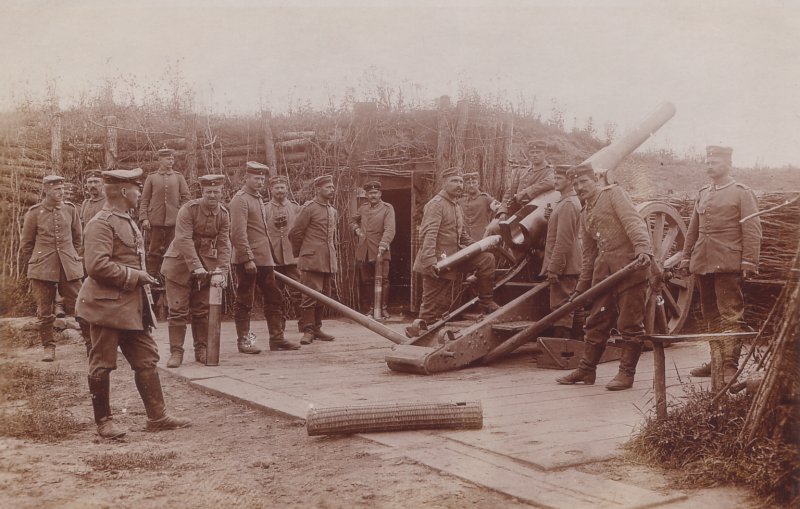
At this time, Krupp were developing a more modern version of the 15 cm schwere FeldHaubitze (sFH) 93 heavy field howitzer providing a more stable carriage by incorporating a recoil system. This field gun became the 15 cm sFH 02 in 1902. Unfortunately, the K99 was more or less obsolete when it was adopted into service in 1899 and therefore Krupp were asked to develop a more modern variant that became the 10 cm Kanone 04 in 1904. The length of the gun (30 calibres) and its maximum range did not change but the K04 had the advantage of a greater rate of fire because its recoil system meant that the sights did not need to be re-laid between rounds.
The K04 shown below served throughout WW1 as did the K99 because of a shortage of heavy field guns but were supplemented in the early years of the war by the 10 cm Kanone 14 and later on by the 10 cm Kanone 17.
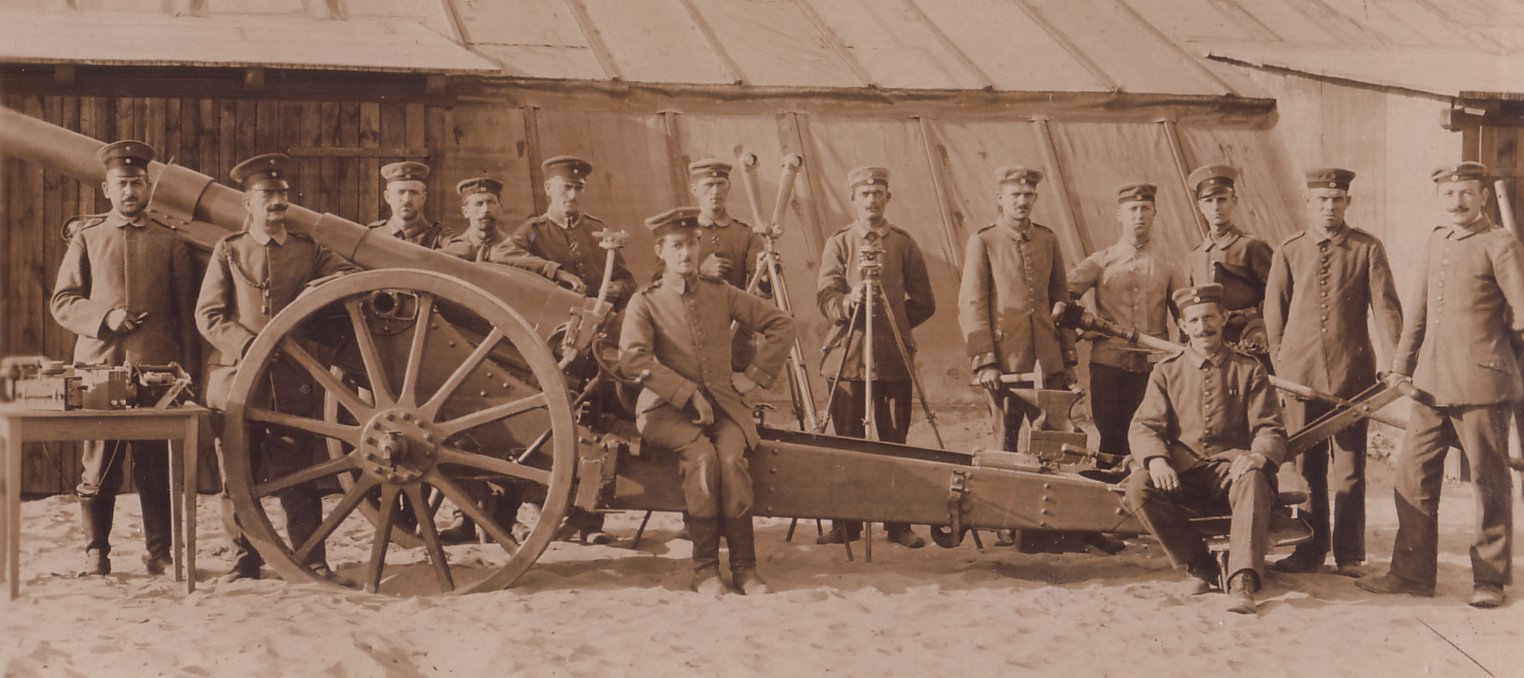
Carriage
The K04 carriage shared some of the features of the sFH 02 that was developed by Krupp a few years earlier. The K04 used a box trail mounted on wooden wheels with steel tyres with brake shoes at the rear that were operated by a hand brake lever above the axle on the right of the carriage. The brake operating mechanism included chains that wrapped around an inner wheel flanged hub. As the gun fired and tried to move backwards on its wheels, this tightened the chain and applied the brakes even harder. The carriage was equipped with a spade to stabilise the gun during firing but it was not fitted with a gun shield to protect the crew.
The gun cradle was supported on a saddle that was fitted with trunnions that pivoted in bearings at the top front of the carriage. The rear of the cradle was supported on a screw jack that was raised or lowered using the large hand wheel on the left of the carriage. The maximum elevation of the gun was 30 degrees.
The cradle was supported in the saddle on a large diameter pivot that allowed the gun to be traversed by up to 2 degrees in each direction. This was controlled by a small hand wheel on the left-hand side of the cradle that rotated a horizontal screw jack at the back of the cradle that moved the rear of the cradle sideways relative to the carriage.
Gun Design
The gun was 3.13 m or 30 calibres long with the rifled part of the barrel being 22 calibres or 2.31 m in length. The gun was of built up construction with a jacket shrunk on to the rifled tube and extending for about half of the length of the barrel. A guide tray was attached to the gun to allow it to slide along runners on either side of the top of the cradle during recoil. The tray was attached via a hoop shrunk on to barrel at the front with two more hoops shrunk on the jacket at the rear and middle of the tray.
The jacket was shaped at the rear to support a vertical sliding breech block of Krupp design. The breech was opened using a single motion lever on the right of the breech that lowered the breech block when pushed forward exposing the breech and ejecting any cartridge in the chamber. The breech incorporated an axial striker to fire a loaded cartridge which was fired using a lanyard fitted to the trigger arm on the right-hand side of the breechblock.

Recoil System
The K04 used a relatively simple hydro-spring recoil system mounted within the cradle. This consisted of two hydraulic buffers mounted side-by-side using cylinders filled with oil connected to lugs under the breech that therefore recoiled with the gun. The pistons within the hydraulic cylinders were mounted on the end of rods fixed to the front cap of the cradle. The pistons incorporated ports that restricted the flow of oil past it during recoil absorbing the recoil energy and bringing the gun to a stop after firing. The maximum recoil length was 0.83 m.

A recuperator spring was fitted over each hydraulic cylinder with a flange on the front end such that, when the gun recoiled, the springs were compressed between the flange and rear of the cradle running out the gun fully once the recoil had ended.
Sights
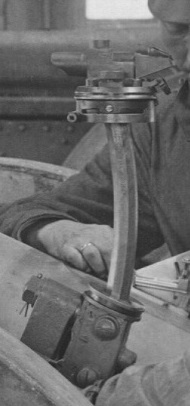
The K04 was fitted with indirect fire sights similar to those on the 15 cm sFH 02. The sights were mounted on a bracket arm fixed on the left-hand side at the rear of the cradle as can be seen above. The sights were reciprocating in order to allow them to compensate for the carriage wheels not being level which was the norm – this tilting caused the vertical plane through the gun to be rotated in azimuth away from the centreline of the carriage in the direction of the lowest wheel. If not corrected, this would lead to a large sighting error especially at higher elevation angles. To correct for this effect, the sight mounting arm was fitted with a reciprocating bracket that could be tilted sideways about a pivot that was parallel to the gun axis in order to restore it back into the vertical plane. An adjustment knob was provided for this purpose together with a levelling bubble on the top of the sight.
The sight itself was mounted on the end of a toothed sight arc that could be raised or lowered in the reciprocating bracket. The sight arm was graduated in degrees and metres with a separate scale for each of the different propellant charges used with the gun. In practice, the required tangent elevation for the gun corresponding to a particular range was set on the sight arm and then the gun elevated until the bubble on top of the sight was level.
The main sighting device was a small collimator mounted on a turntable graduated in angular units with a vernier adjustment scale and eyepiece. The K99 was mainly used for indirect fire. In this mode of operation, the target direction was defined relative to an aiming point set up for the gun that could be, for example, a prominent feature on the landscape that could be seen in the sight. The relative bearing was set on the sight and then the gun was traversed until the aiming point could be seen in the sight which then meant the gun was then pointing in the required target direction.
Ammunition
The K04 fired fixed ammunition comprising of the shell with the brass cartridge case attached. The case included a primer in the base that was struck by a striker to fire the projectile.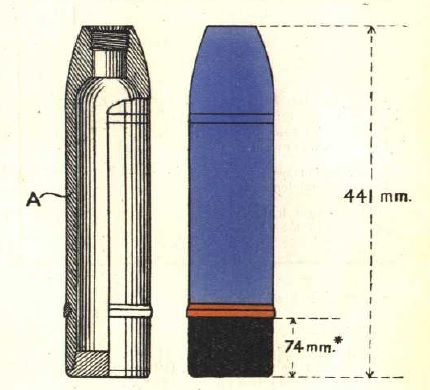
The K04 originally fired the 10 cm Gr. 96 round shown on the right that was 441 mm long or 4.2 calibres and used a 2.5 calibre radius head (CRH). It contained a relatively large bursting charge of 2.2 kg of TNT or Picric Acid. The nominal weight of the complete shell was 18 kg. It was fitted with a Gr. Z. 04 percussion fuze that also was fitted with an optional delay.
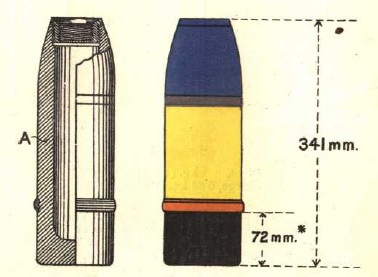
The K04 also fired the 10 cm Gr. Patr. round shown on the right. The was a much shorter shell than the 10 c G. 96 shell that used a much small bursting charge of 0.67 kg of Picric Acid but had thicker steel walls giving it a weight of 17.8 kg. It was fitted with a Dopp. Z. 92 time and percussion fuze and was basically an anti-personnel projectile.
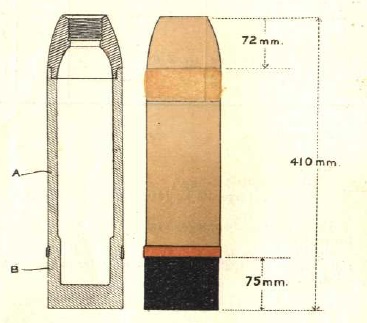 The 10 cm Gr. 15 shell was developed for the K04 at the start of WW1 which had a length of 410 mm and was filled with a bursting charge of 1.8 kg of Picric Acid. It had a nominal weight of 18 kg. It was fitted with a Gr. Z. 04 percussion fuze or a Dopp. Z. 15 triple action fuze. The latter could be used as a time fuze or a percussion fuze with or without a delay.
The 10 cm Gr. 15 shell was developed for the K04 at the start of WW1 which had a length of 410 mm and was filled with a bursting charge of 1.8 kg of Picric Acid. It had a nominal weight of 18 kg. It was fitted with a Gr. Z. 04 percussion fuze or a Dopp. Z. 15 triple action fuze. The latter could be used as a time fuze or a percussion fuze with or without a delay.
10 cm Kanone 04 Specifications
- Length: 6.32 m
- Maximum Width: 1.63 m
- Wheels: Wooden 1.30 m in diameter
- Weight of Gun & Carriage: 2087 kg
- Length of Gun: 3.13 m or 30 calibres
- Bore: 10.52 cm
- Muzzle Velocity: 558 m/s
- Maximum Range: 10,300 m
- Trail: Box trail
- Recoil System: Hydro-spring
- Maximum Recoil: 0.83 m
- Rifling: Polygroove with modified plain section
- Length of Rifling: 22 calibres (2.31 m)
- Twist: Progressive
- Grooves: 32
- Firing Method: Percussion
- Elevation: -5° to +30°
- Traverse: -2° left to +2° right
![]()

